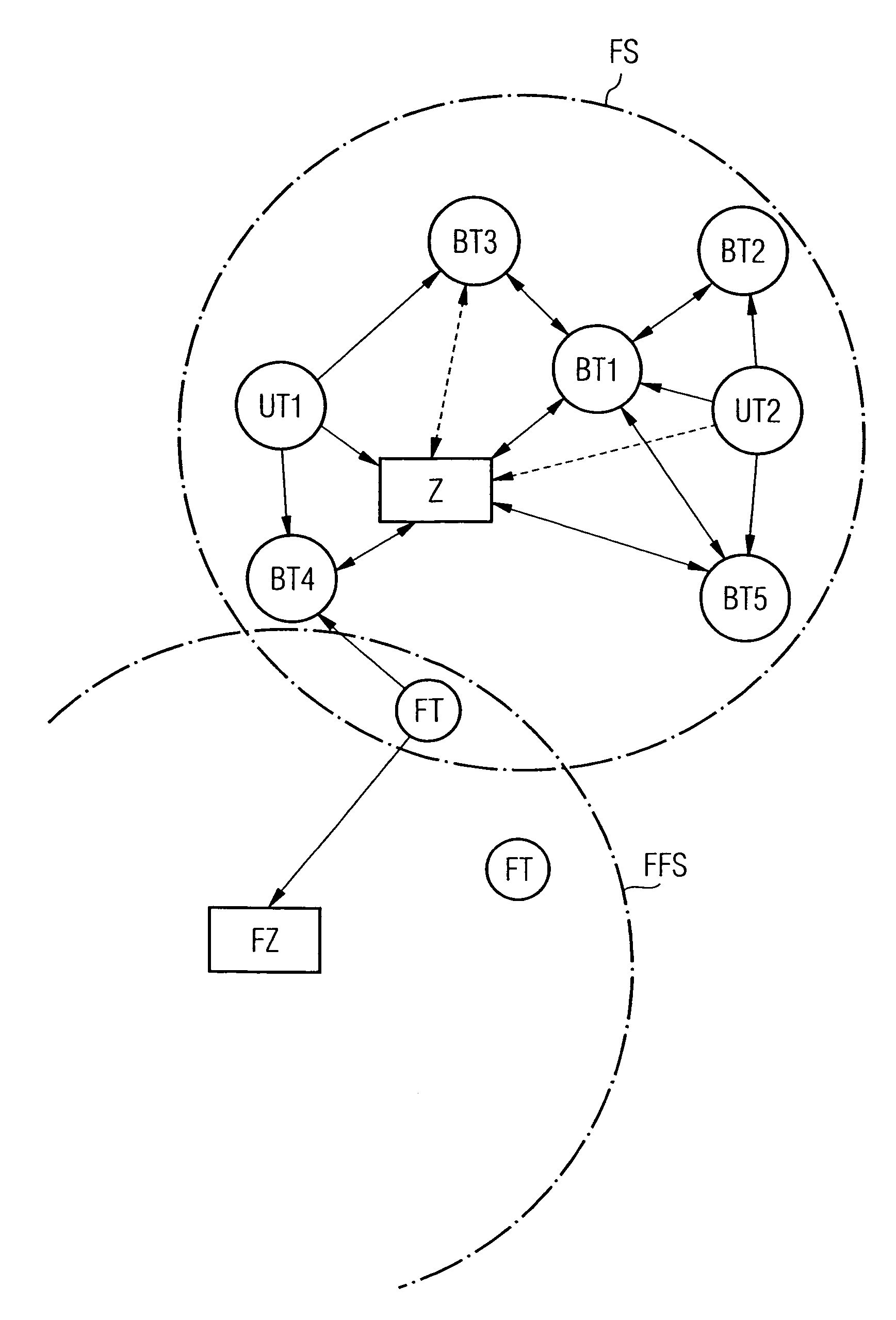Method for radio transmission in an alarm signaling system
a radio transmission and alarm signaling technology, applied in the field of radio transmission of messages, can solve the problems of saving expensive electricity in all other subscribers
- Summary
- Abstract
- Description
- Claims
- Application Information
AI Technical Summary
Benefits of technology
Problems solved by technology
Method used
Image
Examples
Embodiment Construction
[0021]The radio system FS shown in FIG. 1 consists of a central station Z, a number of bidirectional subscribers BT1 to BT5 and individual unidirectional subscribers UT1 and UT2. Provided the radio coverage allows this, the individual bidirectional subscribers BT1, BT4 and BT5 can make direct contact with the central station, in some cases with each other as well. The drawing shows the possible direct radio connections as solid arrows whereas the connections which are not possible—because the radio range is too small or because of a fault—are shown as dotted arrows. Where this direct contact is not possible because of the range or because of a fault, such as for example between BT2 and BT3, contact will be established via a router, that is an intermediate station. In the example shown subscriber BT1 is such a router. The unidirectional subscribers UT1 and UT2 in the example only have a transmitter and can thus only issue messages. Provided they are in a radio range of the central st...
PUM
 Login to View More
Login to View More Abstract
Description
Claims
Application Information
 Login to View More
Login to View More - R&D
- Intellectual Property
- Life Sciences
- Materials
- Tech Scout
- Unparalleled Data Quality
- Higher Quality Content
- 60% Fewer Hallucinations
Browse by: Latest US Patents, China's latest patents, Technical Efficacy Thesaurus, Application Domain, Technology Topic, Popular Technical Reports.
© 2025 PatSnap. All rights reserved.Legal|Privacy policy|Modern Slavery Act Transparency Statement|Sitemap|About US| Contact US: help@patsnap.com



